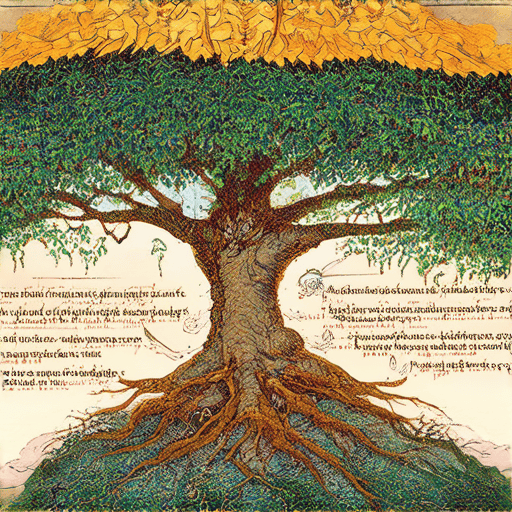Delving into the rich tapestry of human history, one finds a profound narrative woven around the threads of faith and belief – none more influential than the story of Christianity. Spanning centuries, continents, and cultures, the trajectory of this ancient faith has been shaped by pivotal events, influential figures, and transformative ideas. As we embark on this journey through time, we’ll unravel the intricate web of historical context that underpins the evolution of Christianity, exploring the earliest sources of this enduring faith, the complex process of contextualization that facilitated its global spread, and the pivotal moments that defined its place in the annals of human history.

Historical Sources of Christianity
The historical sources of Christianity are diverse and multifaceted, encompassing various texts, traditions, and accounts that have shaped our understanding of the faith.
- New Testament Documents: The four canonical Gospels (Matthew, Mark, Luke, and John), along with the Acts of the Apostles, Epistles, and Revelation, provide primary sources for understanding the life, teachings, death, and resurrection of Jesus Christ.
- Theoretical Source Documents: Scholars propose that there may be earlier written sources behind the New Testament documents, which could offer valuable insights into the historical development of Christianity.
- Early Church Fathers: The writings of early Christian leaders, such as Ignatius of Antioch, Polycarp of Smyrna, and Irenaeus of Lyons, offer important testimony to the spread of Christianity in the 1st and 2nd centuries AD.
- Pagan and Jewish Sources: References to Christianity can be found in the works of non-Christian authors, such as Tacitus, Pliny the Younger, and Josephus Flavius, as well as in Jewish texts like the Talmud and Midrash.
- Gnostic Texts: A collection of ancient texts, often considered heretical, that explore mystical and esoteric aspects of Christianity, highlighting the diversity of early Christian thought.
In addition to these sources, historians rely on archaeological discoveries, such as the Dead Sea Scrolls and the Nag Hammadi library, to reconstruct the historical context of early Christianity.
Understanding the historical sources of Christianity is essential for grasping the complexities and nuances of the faith, allowing us to appreciate its evolution and development over time.
As we delve deeper into the history of Christianity, it becomes clear that the faith has been shaped by a rich tapestry of influences, traditions, and interpretations, making it a dynamic and multifaceted religion.
By examining the historical sources of Christianity, we gain a deeper appreciation for the faith’s ability to adapt, evolve, and thrive across cultures and centuries.
This knowledge enables us to better understand the significance of Christianity in the modern world, its impact on society, and its continued relevance in contemporary discourse.
Ultimately, exploring the historical sources of Christianity enriches our comprehension of the faith, fostering a deeper respect for its complexity, diversity, and enduring influence.
Understanding Christian Contextualization
Christian contextualization refers to the process of communicating the Gospel in a way that is relevant and meaningful to people within their local cultural context. This approach aims to present Christianity in a way that resonates with people’s deepest needs and values, allowing them to understand and follow Christ in a way that is authentic and transformative.
The Importance of Contextualization
Contextualization is essential in today’s diverse and rapidly changing world. As people from different cultures and backgrounds come together, it becomes increasingly important to find common ground and shared values that can facilitate effective communication and understanding. By taking the time to learn about and appreciate the unique perspectives and experiences of others, we can build stronger relationships and foster greater empathy and compassion.
Key Principles of Contextualization
There are several key principles that underlie the process of contextualization:
- Cultural sensitivity: A willingness to listen, learn, and adapt to the cultural norms and values of the community.
- Linguistic accessibility: Using language that is clear, concise, and accessible to the target audience.
- Relational engagement: Building genuine relationships with people based on mutual respect, trust, and understanding.
- Theological relevance: Presenting the Gospel in a way that is relevant and meaningful to the cultural context.
Benefits of Contextualization
Contextualization has numerous benefits, including:
- Increased effectiveness: Communicating the Gospel in a way that resonates with people’s deepest needs and values.
- Greater authenticity: Presenting Christianity in a way that is authentic and true to its core teachings.
- Better relationships: Building stronger relationships with people based on mutual respect, trust, and understanding.
- Deeper understanding: Gaining a deeper understanding of the cultural context and its nuances.
Challenges and Opportunities
While contextualization presents many opportunities for growth and understanding, it also poses several challenges, including:
- Cultural complexity: Navigating the complexities of different cultural contexts and values.
- Linguistic barriers: Overcoming linguistic barriers and finding effective ways to communicate.
- Theological tension: Balancing theological accuracy with cultural relevance.
Conclusion
Christian contextualization is a vital aspect of sharing the Gospel in a way that is relevant and meaningful to people within their local cultural context. By embracing the principles of cultural sensitivity, linguistic accessibility, relational engagement, and theological relevance, we can build stronger relationships, foster greater empathy and compassion, and present Christianity in a way that is authentic and transformative.
The Christian Era in History
The Christian era is a widely accepted scale of chronology used globally to measure time.
- The era is divided into two periods: AD (Anno Domini), which represents the years after the birth of Jesus Christ, and BC (Before Christ), which denotes the years preceding his birth.
- The division between these two periods is based on the traditional belief that Jesus Christ was born in the year 1 AD.
- This dating system has been adopted universally and is used to calculate the age of events, people, and civilizations.
Understanding the Christian Era
The Christian era is not just a method of counting years but also a reflection of the significance of Jesus Christ in human history.
- The era serves as a reminder of the importance of Christianity and its impact on Western civilization.
- It highlights the role of Jesus Christ as a central figure in the development of modern society.
- The Christian era has influenced various aspects of life, including art, literature, science, and politics.
Global Significance of the Christian Era
The Christian era has far-reaching implications beyond its historical significance.
- It has shaped cultural norms, values, and traditions worldwide.
- The era has contributed to the development of modern languages, calendars, and timekeeping systems.
- The Christian era continues to influence contemporary society, shaping our perceptions of time, history, and the world around us.

The Historical Origins of the Spread of Christianity
The spread of Christianity in Europe and the Roman Empire began through the missionary efforts of the apostles and persecuted believers.
-
The early Christian church faced significant challenges, including persecution from the Roman authorities and internal conflicts.
-
Despite these obstacles, Christianity continued to grow and spread throughout the Mediterranean region.
-
The apostle Paul played a crucial role in the spread of Christianity, traveling extensively throughout the Roman Empire and establishing churches in various cities.
-
Paul’s writings, particularly his letters to the Galatians and Romans, addressed the paganism of the Greco-Roman world and provided a theological framework for the emerging Christian community.
Missionary Efforts and Early Church Growth
The early Christian church relied heavily on missionary efforts to spread its teachings and establish new communities.
-
Apostolic missionaries, such as Peter and John, traveled to various regions, preaching the gospel and establishing churches.
-
Persecuted Christians, often forced to flee their homes, carried the message of Christianity to distant lands, contributing to its rapid expansion.
-
The apostle Paul’s extensive travels and evangelistic work helped to establish Christianity as a major force in the Roman Empire.
-
As Christianity grew, it attracted attention from both supporters and detractors, leading to increased persecution and conflict within the early church.
The Role of Paul in Spreading Christianity
The apostle Paul’s contributions to the spread of Christianity cannot be overstated.
-
Paul’s extensive travels took him to numerous cities, including Corinth, Ephesus, and Philippi, where he established churches and preached the gospel.
-
His writings, particularly his epistles, provided a theological foundation for the emerging Christian community and addressed issues related to faith, morality, and worship.
-
Paul’s emphasis on the importance of faith, love, and obedience helped shape the early Christian church’s understanding of its relationship with God and the world.
-
Through his missionary work and writings, Paul played a pivotal role in spreading Christianity throughout the Roman Empire and beyond.
Conclusion
The historical origins of the spread of Christianity are complex and multifaceted, involving the missionary efforts of the apostles, persecuted believers, and the apostle Paul.
Understanding the early Christian church’s struggles, triumphs, and theological developments provides valuable insight into the evolution of Christianity and its ongoing impact on Western civilization.
The Historical Background of Christianity
As a follower of Christ, I am deeply interested in understanding the rich history behind my faith.
- Early Beginnings: Christianity originated in Judea during the mid-first century CE, rooted in the teachings of Jesus and the missionary work of Paul of Tarsus.
- A Small Sect: Initially, Christianity was a small, unorganized group that promised personal salvation after death.
- Rapid Growth: As the apostles spread the word, Christianity rapidly grew, attracting followers from various backgrounds and cultures.
- Persecution and Martyrdom: Despite facing intense persecution and martyrdom, the early Christian community persevered, fueled by their unwavering faith and conviction.
- The Role of the Bible: The Bible played a pivotal role in shaping the Christian narrative, serving as a source of inspiration, guidance, and authority for believers.
- The Early Church Fathers: Key figures like Ignatius of Antioch, Polycarp of Smyrna, and Justin Martyr contributed significantly to the development of Christian theology and doctrine.
- The Spread of Christianity: Through trade routes, missionary work, and cultural exchange, Christianity gradually spread throughout the Mediterranean world, eventually becoming a dominant force in Western civilization.
- Key Events and Milestones:
- The Crucifixion and Resurrection of Jesus
- The Conversion of Paul
- The Council of Nicaea
- The Edict of Milan
- The Fall of Constantinople
- Legacy and Impact: Christianity has had a profound impact on art, literature, music, philosophy, science, and politics, shaping the course of human history in countless ways.
I hope this brief overview provides a solid foundation for understanding the historical background of Christianity.

The Origin of Christianity
I believe that the origin of Christianity dates back to the life and teachings of Jesus Christ, who lived in the 1st century AD.
-
Jesus was born in Bethlehem, in the Roman province of Judea, to Mary, a Jewish woman, and Joseph, a carpenter.
-
According to the New Testament, Jesus was the son of God and was sent to Earth to save humanity from sin.
-
He preached a message of love, forgiveness, and redemption, and performed many miracles during his ministry.
-
After his death and resurrection, Jesus’ followers believed him to be the Messiah and began to spread his teachings throughout the world.
The Early Christian Church
The early Christian church was formed by Jesus’ disciples, who continued to preach and teach his message after his death.
-
They established communities of believers in Jerusalem and other parts of the Mediterranean region.
-
They wrote letters and accounts of Jesus’ life and teachings, which became the basis for the New Testament.
-
They faced persecution and opposition from the Roman authorities and other groups, but continued to grow and spread their message.
The Spread of Christianity
Over time, Christianity spread throughout the Roman Empire and beyond, influenced by missionaries, traders, and travelers.
-
It reached Europe through the apostle Paul and other early missionaries.
-
It spread to Africa through trade routes and missionary work.
-
It reached Asia through the Silk Road and other trade routes.
I believe that the origin of Christianity is rooted in the life and teachings of Jesus Christ, and that its spread throughout the world has been shaped by the efforts of his followers and the cultural and historical contexts in which they lived.

0 Comments